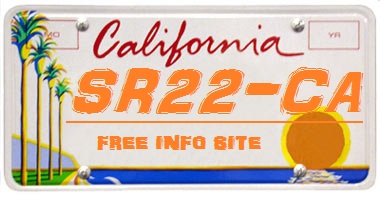March 2, 2013

TDL4 MBR Rootkit Virus Removal by Britec TDSS / TDL4 Removal Tool 32-bit www.malwarecity.com TDSS / TDL4 Removal Tool 64-bit www.malwarecity.com Kaspersky TDSS Killer support.kaspersky.com aswMBR public.avast.com MBRCheck ad13.geekstogo.com Hitman Pro www.surfright.nl Rootkit.Win32.TDSS.tdl4 TDL4 Botnet Rootkit TDL-4 (TDSS, Alureon.DX, Olmarik, TDL) ———————————————— Need help with your computer or laptop? www.briteccomputers.co.uk ———————————- www.britec.org.uk http
Tags: botnet-rootkit, how to, howto & style, kaspersky, olmarik, removal, removal-tool, rootkit, rootkit-virus, virus removal, your-computer
Posted in Virus Removal | No Comments »
February 26, 2013
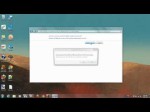
If your virus was caught on an account that was not the administrator this is a quick way to get rid of it. Part of my Virus Removal Series and one of many ways to get your computer back! Use the links below to access the playlist which I will add all new virus removal videos to as I make them. Full Virus Removal Playlist link: www.youtube.com This is an ever growing series. Please contact me if you have a link to a virus I haven’t profiled yet. I will be adding to these as I get a dedicated computer and catch every virus I can one at a time! I will be placing these on my computer and showing step by step how to remove each one. PLEASE READ THIS. **************** If this video helped you, Please consider helping me make more helpful virus removal videos. I need a dedicated computer to catch viruses and wipe them out on camera also links to the viruses you catch. If you are interested in helping out click here len.farneth.net **************** THANK YOU
Tags: catch-viruses, help, helpful-virus, how to, playlist, playlist-which, science & technology, showing-step, video, virus, virus removal, virus-removal, viruses
Posted in Virus Removal | No Comments »
February 25, 2013
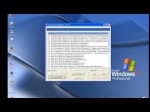
Is your internet browser acting funny? This video falls into the virus removal category. Watch this video on how to remove the malware that may have taken over. Hijackthis: free.antivirus.com Hijackthis log file checker : hijackthis.de Make sure to show your support by rating and subscribing.
Tags: aid, browser-acting, diy, education, how to, internet, support, video, video-falls, video-on-how, virus, virus removal, your-internet
Posted in Virus Removal | No Comments »
February 22, 2013

Have you lost data from your PC due to a virus attack? Are you regularly scanning your PC using Kaspersky Antivirus software? Is your system’s speed and performance much slower than it was a few days ago? This could be because of a virus infection on your machine. Scan your PC regularly using Kaspersky Antivirus software installed on your PC.Check our video for the quick and easy steps to start your PC scan. In case you are facing any other problems related to your computer, operating system, software applications or peripheral devices like printers, MP3 players, digital cameras, etc. then call iYogi on 1-877-524-9644 and we will fix it. iYogi warrants that the content in this video is provided on an “as is” basis with no express or implied warranties whatsoever. Any reference of any third party logos, brand names, trademarks, services marks, trade names, trade dress and copyrights shall not imply any affiliation to such third parties, unless expressly specified.
Tags: aid, content, digital-cameras, diy, how to, like-printers, machine, science & technology, virus-infection, your-computer
Posted in Virus Removal | No Comments »
November 15, 2012
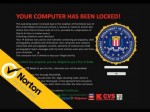
How to delete FBI Moneypak exe file using Antivirus 1) Start by shutting down your computer by holding the power button for ten seconds. 2) As the system restarts, press F8 key twice to bring up the advanced boot options. 3) Use the down arrow to select “Safe Mode with Networking” option. 4) Using the browser, go to norton.com 5) Click the button “Download Norton Power Eraser” (this antivirus will delete FBI Moneypak) 6) Save it to the Desktop and double click icon to run the exe file 7) Agree to the User License terms 8) As soon as Norton Power Eraser initializes, click ‘Scan for Viruses’ 9) Let it Restart to scan 10) Tap F8 again as the computer reboots 11) Use the down arrow to select “Safe Mode with Networking” option again. 12) Click Run to allow Norton Power Eraser to automatically scan. 13) Once it finishes, you’ll see the ‘Scan Complete’ window with the results of the infected file. 14) Click the Fix button at the bottom to delete FBI Moneypak, if found. 15) It will ask you to reboot or restart your system one more time. Click Restart. 16) When your computer reboots to normal mode, you’ll see a confirmation that NPE removed the FBI Moneypak exe file. This FBI Moneypak (trojan ransomlock) removal guide is from www.norton.com More Moneypak Removal instructions can be found at Norton Support Portal at https Tags: fbimoneypak fbi moneypak virus “how to” remove trojan ransomlock Case History: This is a Malware or ransomware that fakes as an alert or a warning from …
Tags: aid, antivirus, browser, eraser, fbi, fix, history, how to, networking, norton, norton-power, norton-support, portal-at-https, removed-the-fbi
Posted in Virus Removal | No Comments »
August 13, 2012

Website= muhammadniaz.blogspot.com Facebook= www.Facebook.com YouTube= www.YouTube.com My Name is Muhammad Niaz. I am Computer Graphics Designer, Web Designer, Hardware and Software Engineer from Karachi, Pakistan. WORLD Best Site for, Solve your Computer Problems, Download Free Register Software & Games, Make Money Online, Watch Live TV Channels, Learn Complete Computer Softwares and Computer Tips in Urdu Language with Video.
Tags: background layer, blur, computer tips, designer, education, facebook, filter, gaussian blur, how to, language, learn-complete, money, muhammad-niaz, software problems
Posted in Software Functioning Abnormally | No Comments »
August 13, 2012

www.beyourownit.com -A step by step guide to how to remove potential virus infections. A complete walk through to get that virus off your pc. See more information at www.beyourownit.com
Tags: advice, avg, complete-walk, computer virus removal, fix, how to, howto & style, norton, remove-potential, technology, virus
Posted in Virus Removal | No Comments »
August 9, 2012
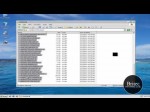
How to remove a Trojan, Virus, Worm, or other Malware by britec.co.uk Malware – Malware is programming or files that are developed for the purpose of doing harm. Thus, malware includes computer viruses, worms, Trojan horses, spyware, hijackers, and certain type of adware. This article will focus on those malware that are considered viruses, trojans, worms, and viruses, though this information can be used to remove the other types of malware as well. We will not go into specific details about any one particular infection, but rather provide a broad overview of how these infections can be removed. For the most part these instructions should allow you to remove a good deal of infections, but there are some that need special steps to be removed and these won’t be covered under this tutorial. Before we continue it is important to understand the generic malware terms that you will be reading about. Adware – A program that generates pop-ups on your computer or displays advertisements. It is important to note that not all adware programs are necessarily considered malware. There are many legitimate programs that are given for free that display ads in their programs in order to generate revenue. As long as this information is provided up front then they are generally not considered malware. Backdoor – A program that allows a remote user to execute commands and tasks on your computer without your permission. These types of programs are typically used to launch attacks on other …
Tags: adware-programs, backdoor, computer virus removal, drive, forum, how to, infected, infections, internet, program, remove, security, trojan, virus
Posted in Virus Removal | No Comments »
August 1, 2012
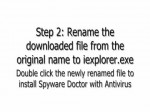
www.freeremovalofspyware.org If your computer has been infected with My Security Shield, then use these easy to follow instructions to remove My Security Shield.
Tags: computer hacks, diy, funny, how to, music charts, security shield removal, security-shield, spyware removal, your-computer
Posted in Virus Removal | No Comments »
July 31, 2012
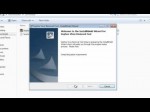
www.sophos.com Our Virus Removal tool is a handy bit of software that helps you easily remove infections from your computer. This is a quick walkthrough of installing it
Tags: aid, cleanup, how to, howto & style, maker, sophos, spyware removal, then-use, tutorial, virus, virus removal, windows-safeguard
Posted in Virus Removal | No Comments »


